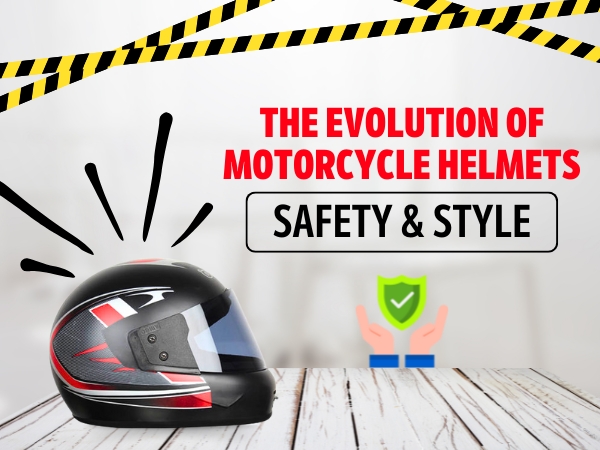In the early days of motorcycling, helmets were not even part of the conversation. Riders sped through streets with only goggles or caps, believing skill alone would keep them safe. Unfortunately, rising accidents in the mid-20th century quickly highlighted the dangers of riding without proper protection. The first motorcycle helmets were simple leather caps and cork-lined shells that provided minimal safety. They were basic, heavy, and far from stylish—but they laid the foundation for the safety standards we recognize today.
The Birth of Certified Safety
By the 1950s and 1960s, helmet designs had advanced with the introduction of fiberglass shells and polystyrene liners, giving riders real impact resistance for the first time. Governments and safety bodies soon stepped in, mandating certifications to ensure helmets met minimum protection standards. In India, the ISI mark became a critical benchmark, while internationally, DOT and ECE certifications defined road-legal helmets. These changes elevated helmets from optional accessories to life-saving necessities.
At Virgo Helmets, we proudly align with this evolution by producing helmets that not only meet but exceed safety standards, ensuring every rider is protected with ISI-certified quality.
Technology Meets Design
As manufacturing techniques improved, helmets became lighter, stronger, and more aerodynamic. The use of ABS plastic and advanced polycarbonates allowed for shells that could withstand higher impact forces without adding unnecessary weight. Multi-density EPS liners were introduced to absorb shocks across different speeds, while visors evolved to include UV resistance, scratch-proof coatings, and anti-fog treatments.
But the transformation wasn’t only about engineering. For the first time, helmet makers began focusing on comfort and design. Ventilation systems, removable padding, and better retention mechanisms made helmets suitable for long-distance riding and daily commutes alike. Riders could finally wear helmets for hours without discomfort.
Style Becomes Part of the Ride
In the past, helmets were purely functional and often considered unattractive. Riders wore them only because they had to. But as motorcycle culture grew, especially among younger generations, helmets became part of a rider’s style statement. Matte finishes, dual-tone colors, reflective graphics, and bold designs changed how helmets were perceived. Instead of being an obligation, they became an extension of identity.
At Virgo Helmets, we’ve embraced this shift fully. Our designs cater to all riders—from professionals seeking sleek, minimalist looks to young enthusiasts who prefer vibrant graphics that stand out on the road. For women, we’ve introduced lightweight, ergonomically designed models with aesthetic finishes that blend fashion with functionality.
The Rise of Customization
One of the biggest milestones in helmet evolution has been personalization. Riders today want helmets that reflect their unique personality, whether through name tags, racing stripes, club logos, or one-of-a-kind artwork. What was once a niche trend has now become mainstream, fueled by social media visibility and group riding culture.
Virgo Helmets is proud to lead this space with safe customization options that never compromise on structural integrity. Unlike aftermarket modifications that risk weakening the helmet, our in-house processes use safe paints, vinyl wraps, and certified accessories, keeping both your style and your safety intact.
The Modern Indian Rider: Safety & Style Combined
In India, where two-wheelers are an essential mode of transport, helmets are not just safety gear—they’re a daily companion. Today’s riders expect helmets that can endure extreme heat, dust, and long hours, while still looking sharp. This dual demand for safety and style has shaped the way manufacturers like Virgo design helmets. Features like anti-bacterial liners, micrometric buckles, advanced airflow systems, and ISI-certified shells ensure that riders are both protected and comfortable.
More importantly, helmets are now seen as a fashion-forward accessory. College students match them to their scooters, delivery partners choose lightweight and breathable options, and biking clubs select helmets that enhance group identity. This cultural shift in India has cemented helmets as symbols of responsibility and personal expression.
The journey of helmet manufacturing shows just how far we’ve come—from leather caps to advanced, customized designs. Helmets today are more than just safety gear; they are symbols of identity, confidence, and lifestyle. At Virgo Helmets, we are proud to stand at the forefront of this evolution, offering products that combine world-class safety features with stylish, modern aesthetics.
As we look to the future, helmet design will only get smarter—with possibilities like integrated Bluetooth communication, heads-up displays, and eco-friendly materials. But one thing will remain constant: the balance of safety and style. And that’s a promise Virgo Helmets continues to deliver to every rider.

